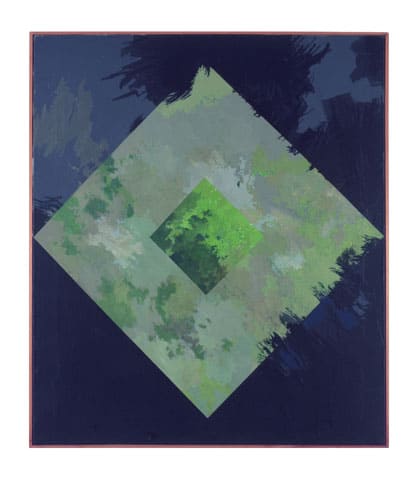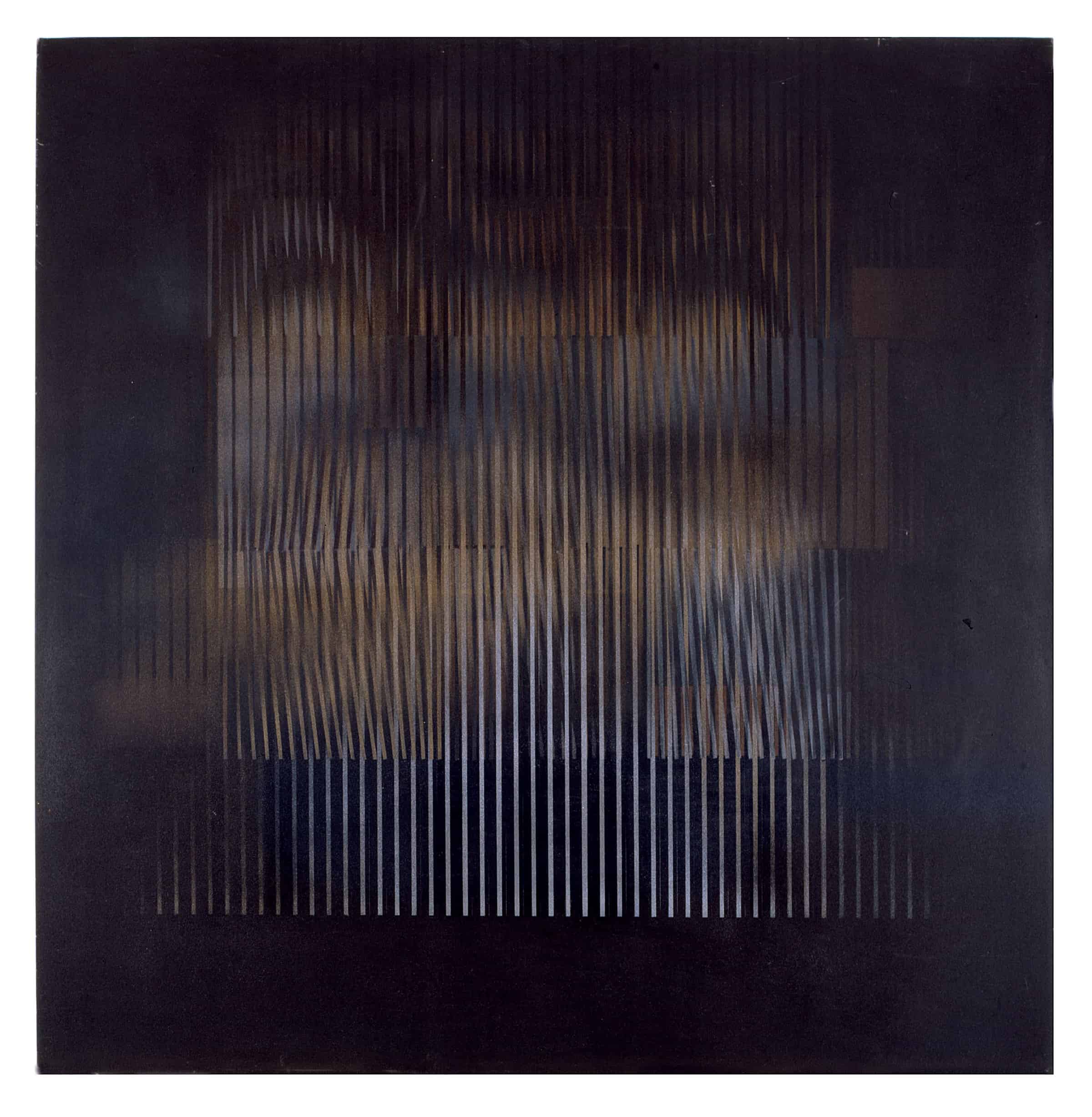
Paul Boam was born in Derbyshire, England in 1938. He remembers having a desire since childhood to be an artist, though not coming from an artistically inclined family. Instead, Boam attributes his interest in art to his being frequently ill as a child, yet being able to draw and paint while alone. Boam went on to train at the Nottingham School of Art where he found himself surrounded by like-minded people, and discovered artists such as Piet Mondrian and Paul Klee who stimulated his fascination with geometry. Following his studies Boam moved to Tasmania, where he remains based today, and began teaching at the Tasmanian School of Art in 1964.
Boam is known for his abstract paintings, which although often highly structured, also frequently contain elements of movement and fluidity, through the organic components often found in his grid-like structures. These organic forms are drawn from the themes Boam explores in his paintings; namely the Tasmanian landscape and its more abstract elements, such as considerations of light, and the weather events like bushfires as subjects. The artist has stated ‘The landscape almost always plays a part in my work but as a feeling, a sense of place, rather than a depiction.’ He has described his early works as ‘very tonal’, as they were based on more industrial landscapes than his later works. This shift demonstrates how the adjustment to life in Tasmania and its natural vistas impacted Boam’s practice. The artist also credits his teaching role at the University of Tasmania, which focused on colour theory at this time, as having played a vital role in the changing direction his practice took after moving from the UK to Tasmania.

Boam’s exploration of the Tasmanian landscape is neither strictly literal or figurative, rather his works often explore more ephemeral natural qualities such as light. Usually, Boam has undertaken these works in the studio, but at times he has also worked directly from the landscape. Although primarily recognised as a painter, Boam’s practice is more diverse. He has considered drawing to be a fundamental part of his art making process, this becoming apparent through paintings such as Untitled (1971) and Song before Sunrise (1980) from the DCC Permanent Collection. These works and others like them have distinctly structured geometric designs underlying the more fluid, overlying paint. In this way, Boam’s paintings walk the line between formal abstraction and a more expressive painting style.
Boam’s practice has also seen a material change over a period of several years, following a diagnosis with cancer which has limited his ability to work at an easel. The artist has since adopted the medium of collage as an alternative to painting, which has allowed him to continue to explore the concepts that formed the basis of his painting practice, while experimenting with the potential of this new medium. These collages sustain Boam’s distinctive style of abstraction while also containing more figurative elements, albeit often comprising disjointed details.
This shift in process over recent years reflects the approach Boam has taken to each of his paintings over the years, as reworking canvasses has been central to his art making. These interactions between the old painting, the new, and the artist are referred to by Boam as a dialogue, essential to the process. Boam has commented ‘My paintings are usually made over a period of time, reworked, overpainted – changed. I wait for the painting to start talking to me.’
Erin Wilson – Curator